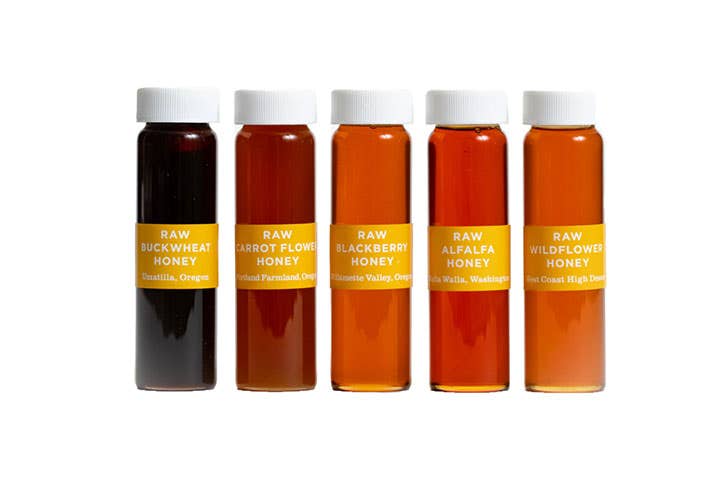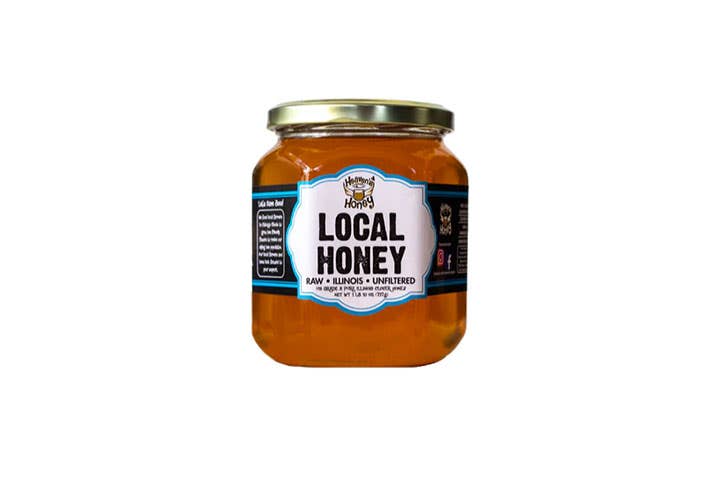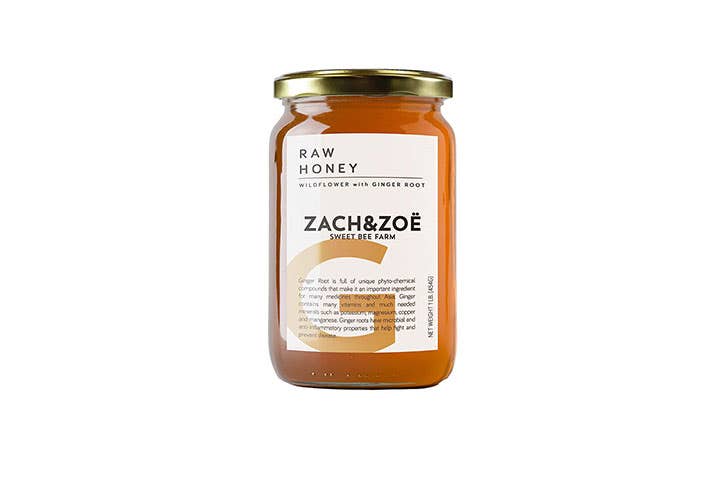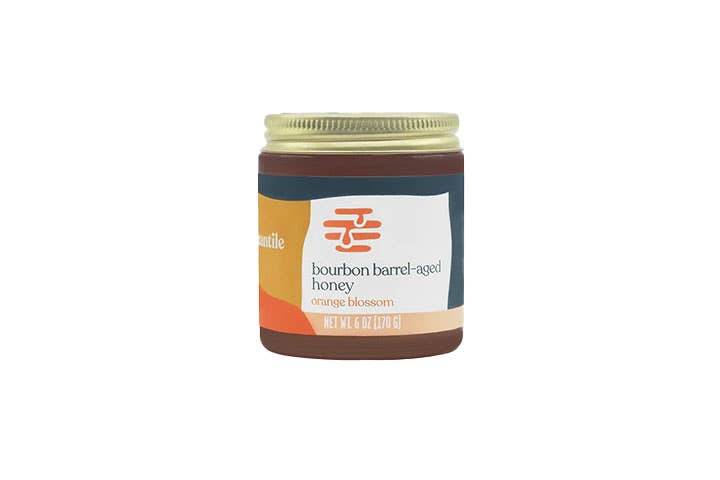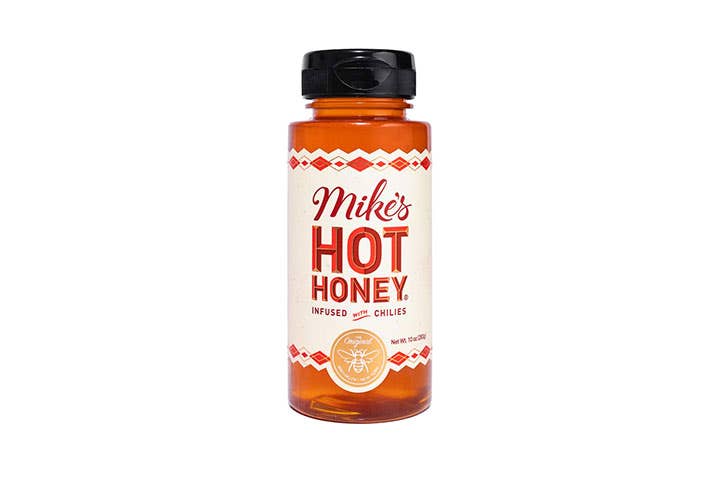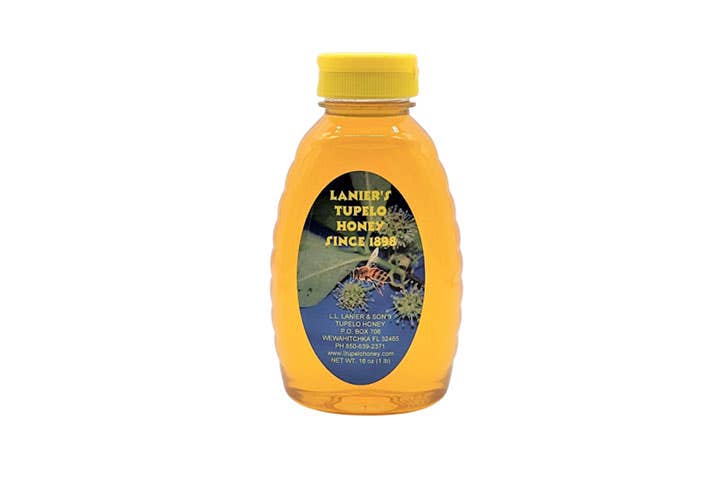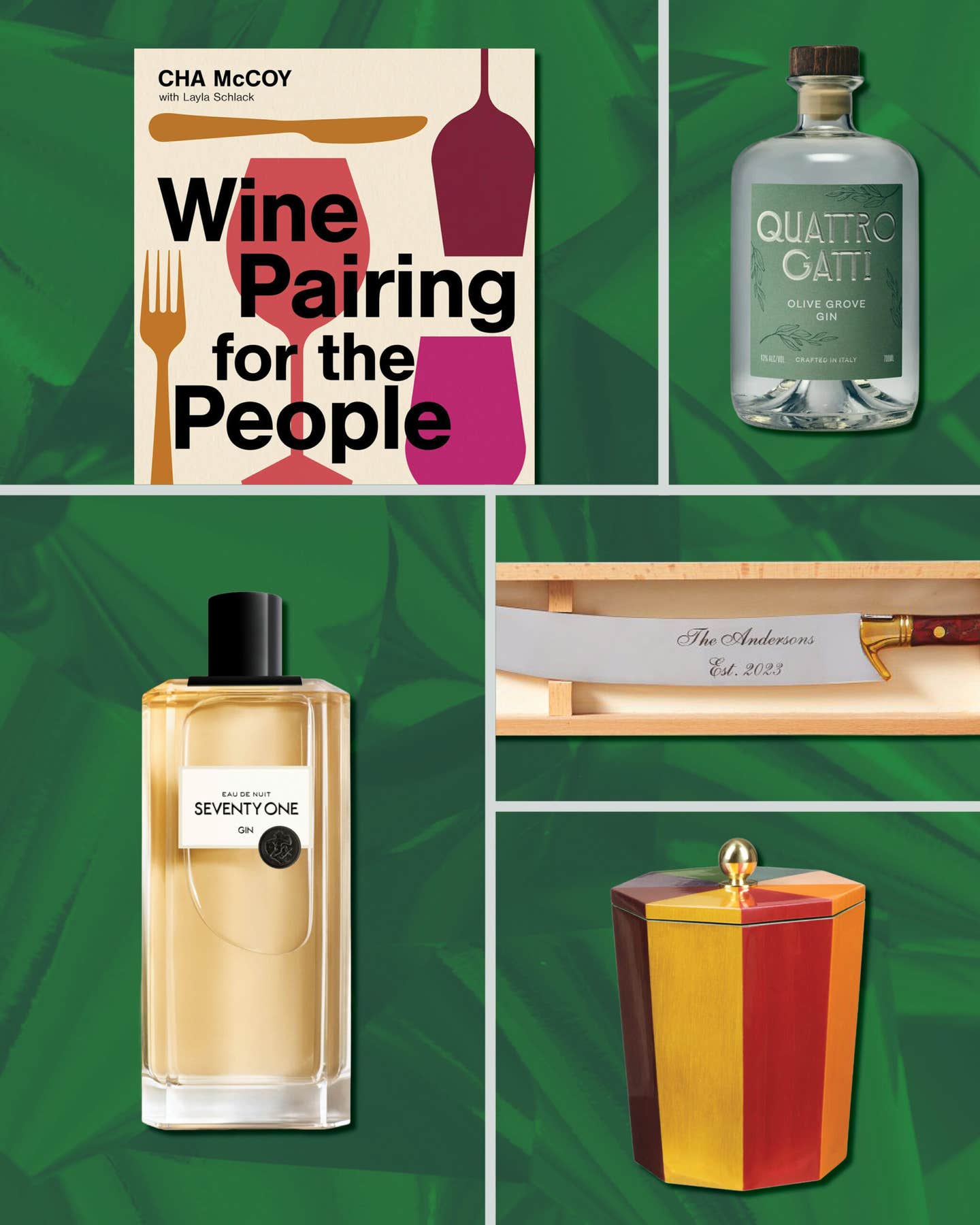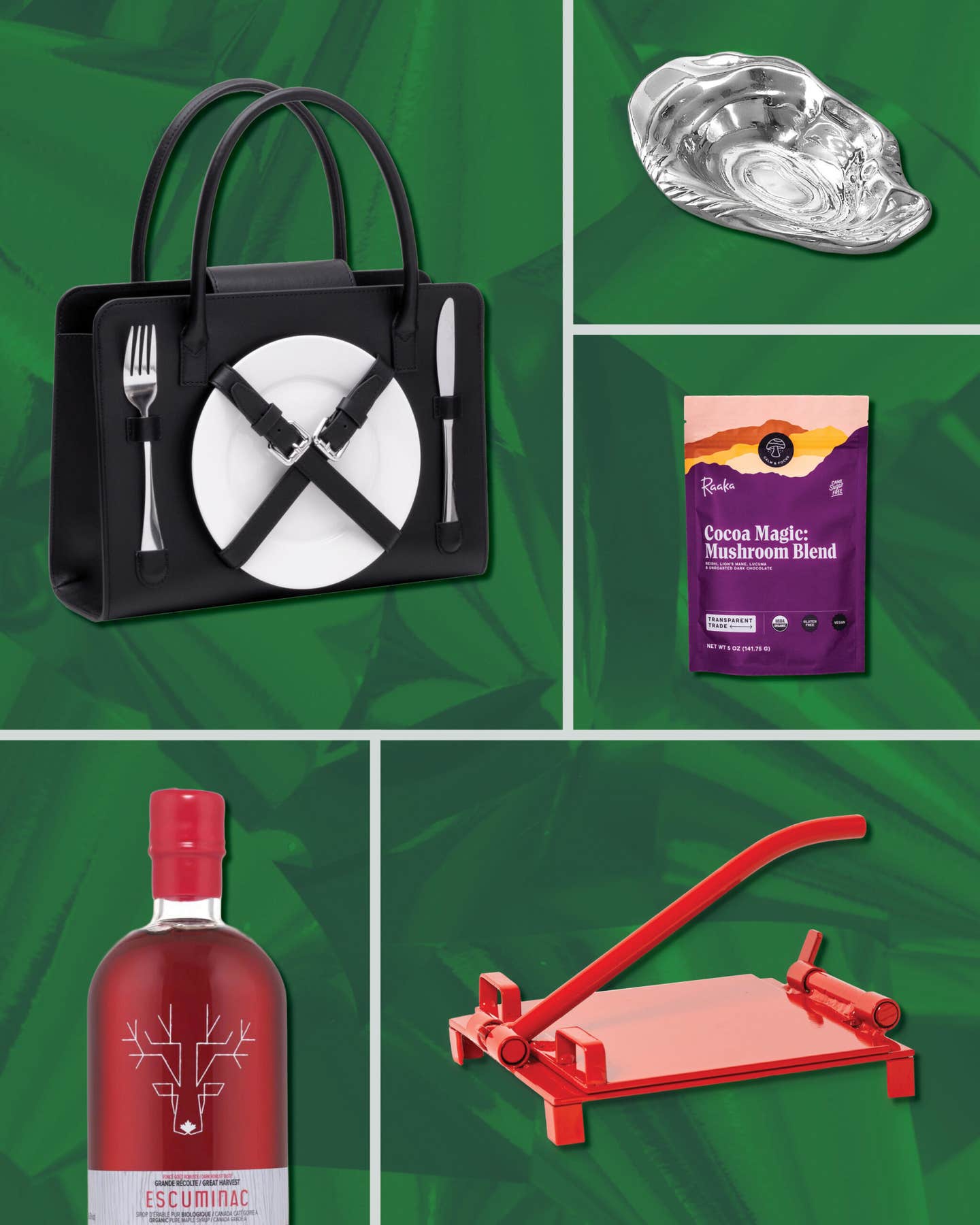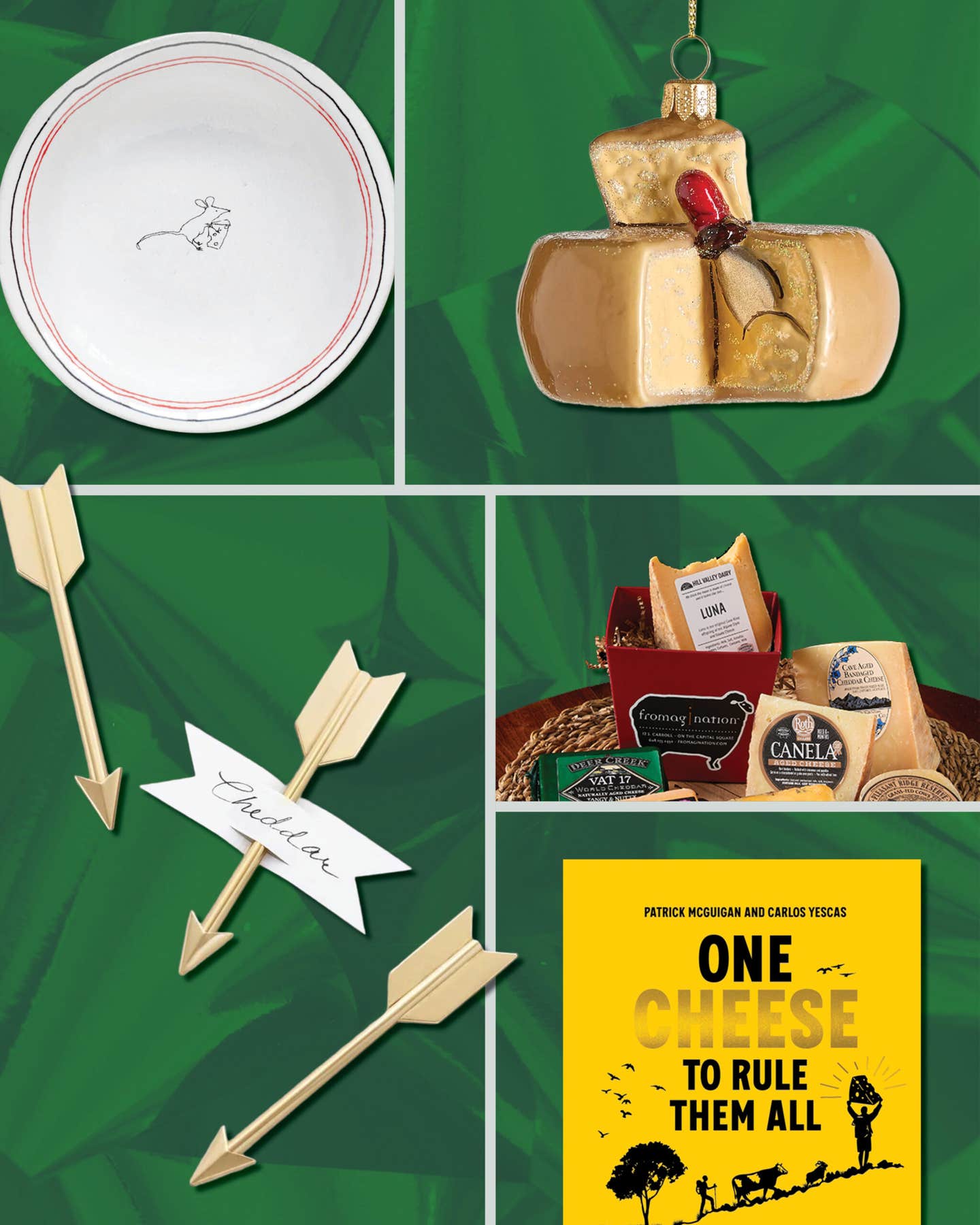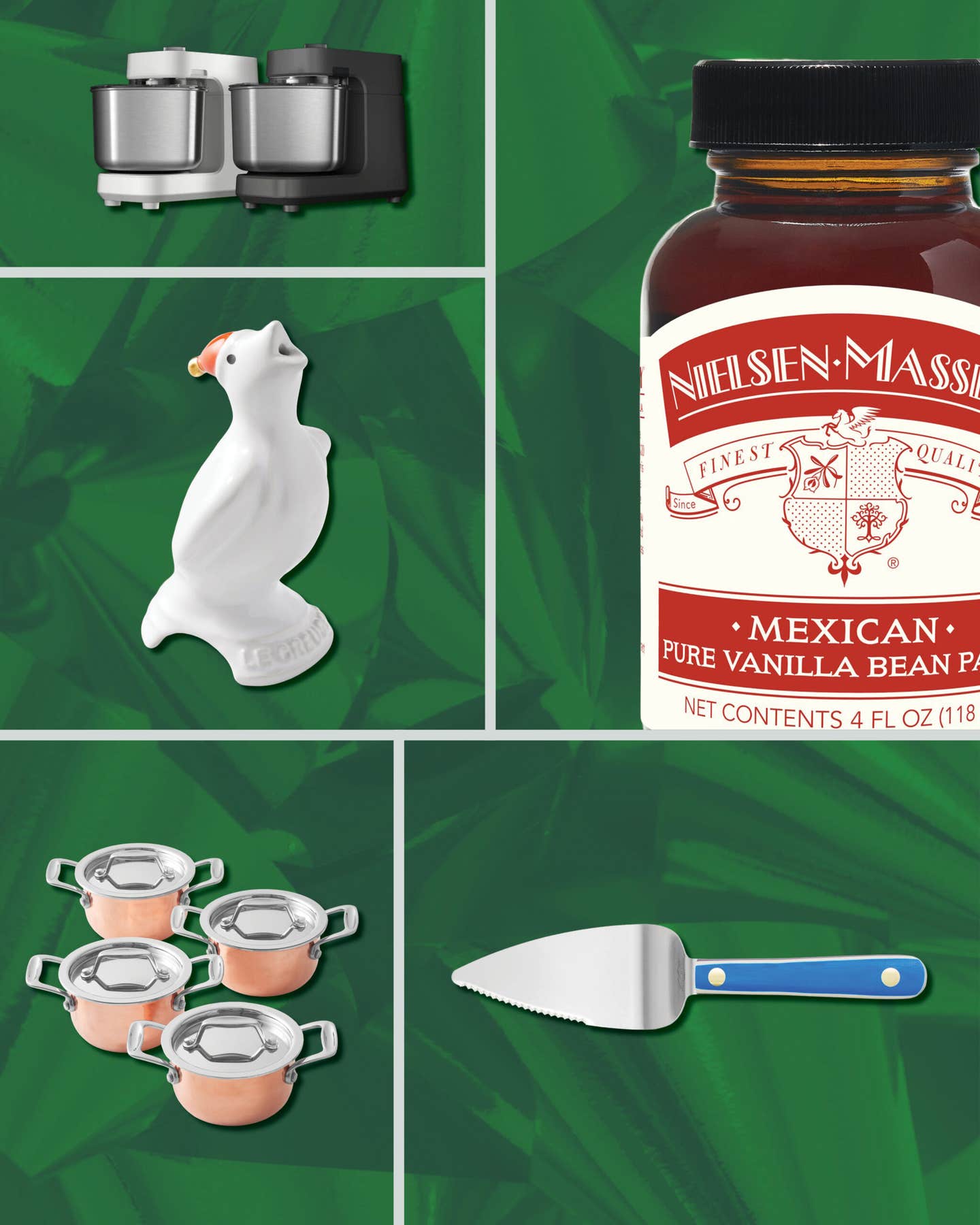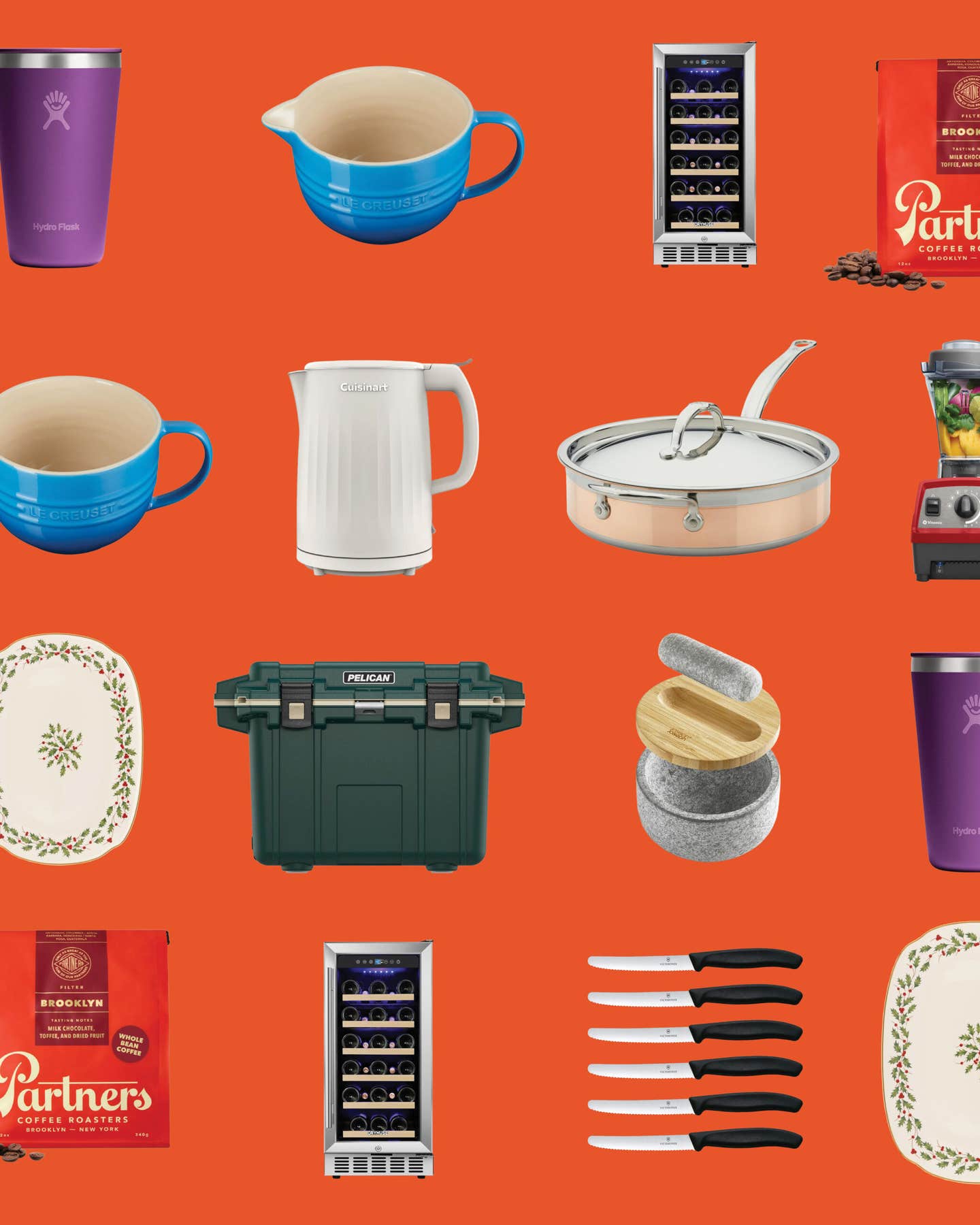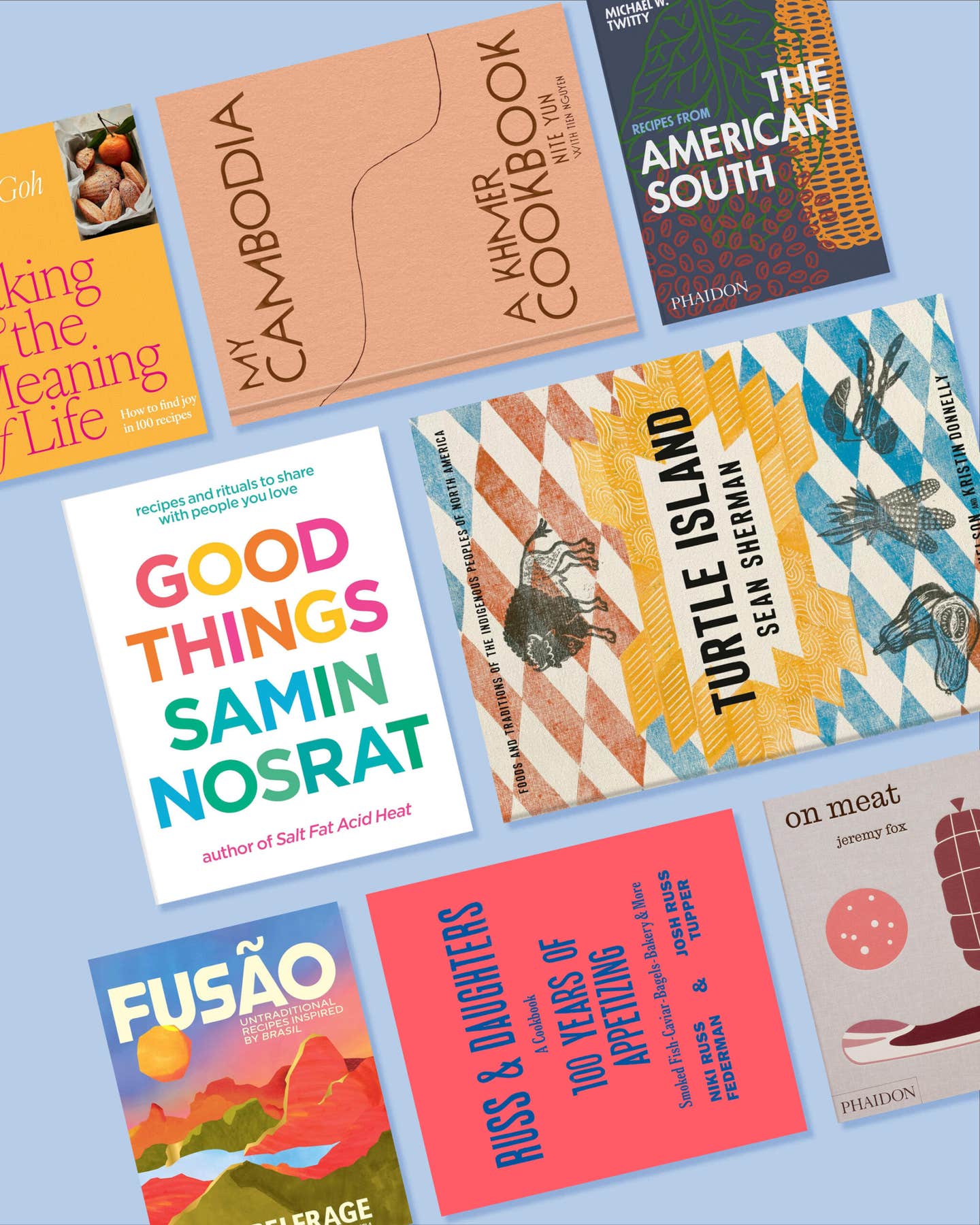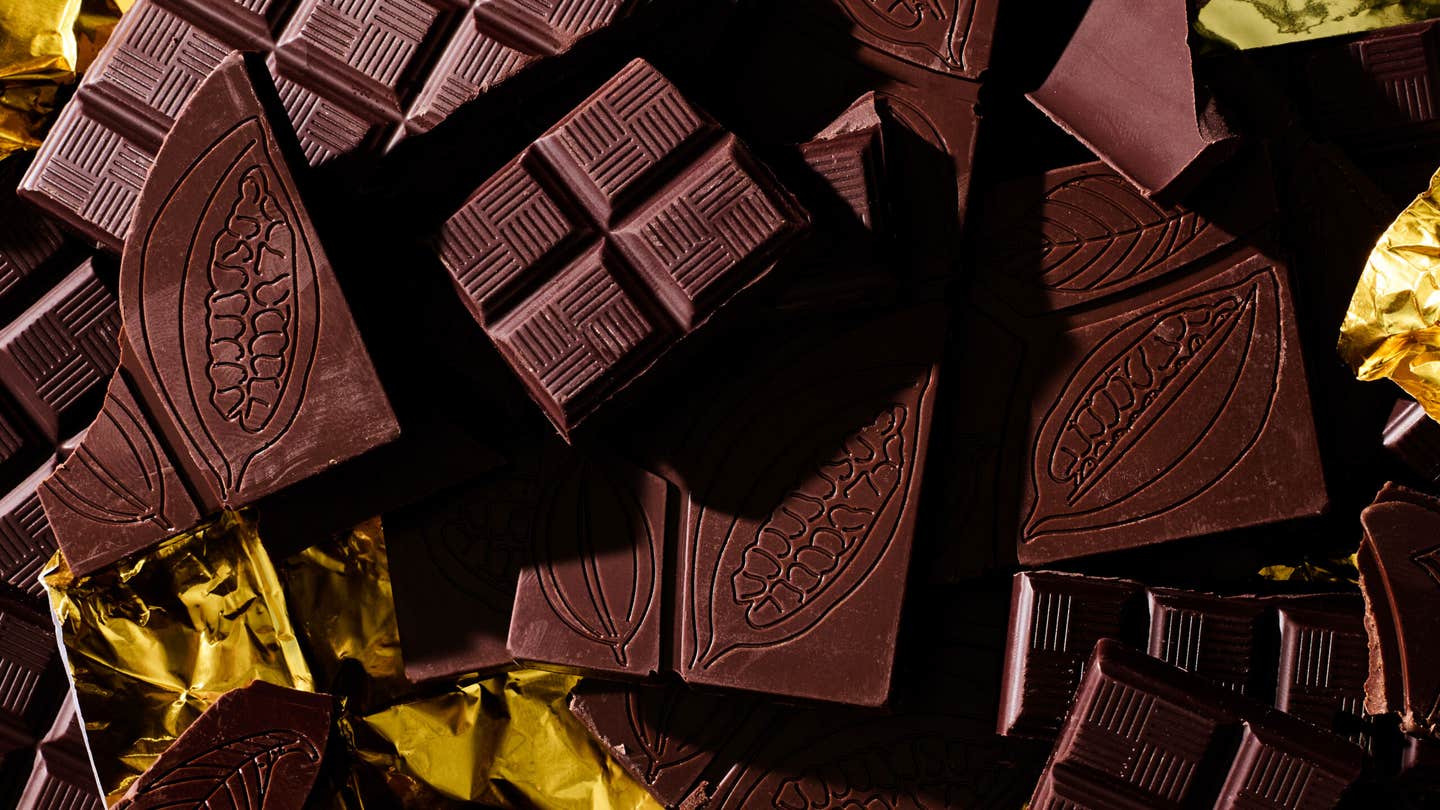The Best Honeys to Sweeten Up Your Day
From the Midwest to Florida swamps, these pots of gold are easily found without a rainbow.
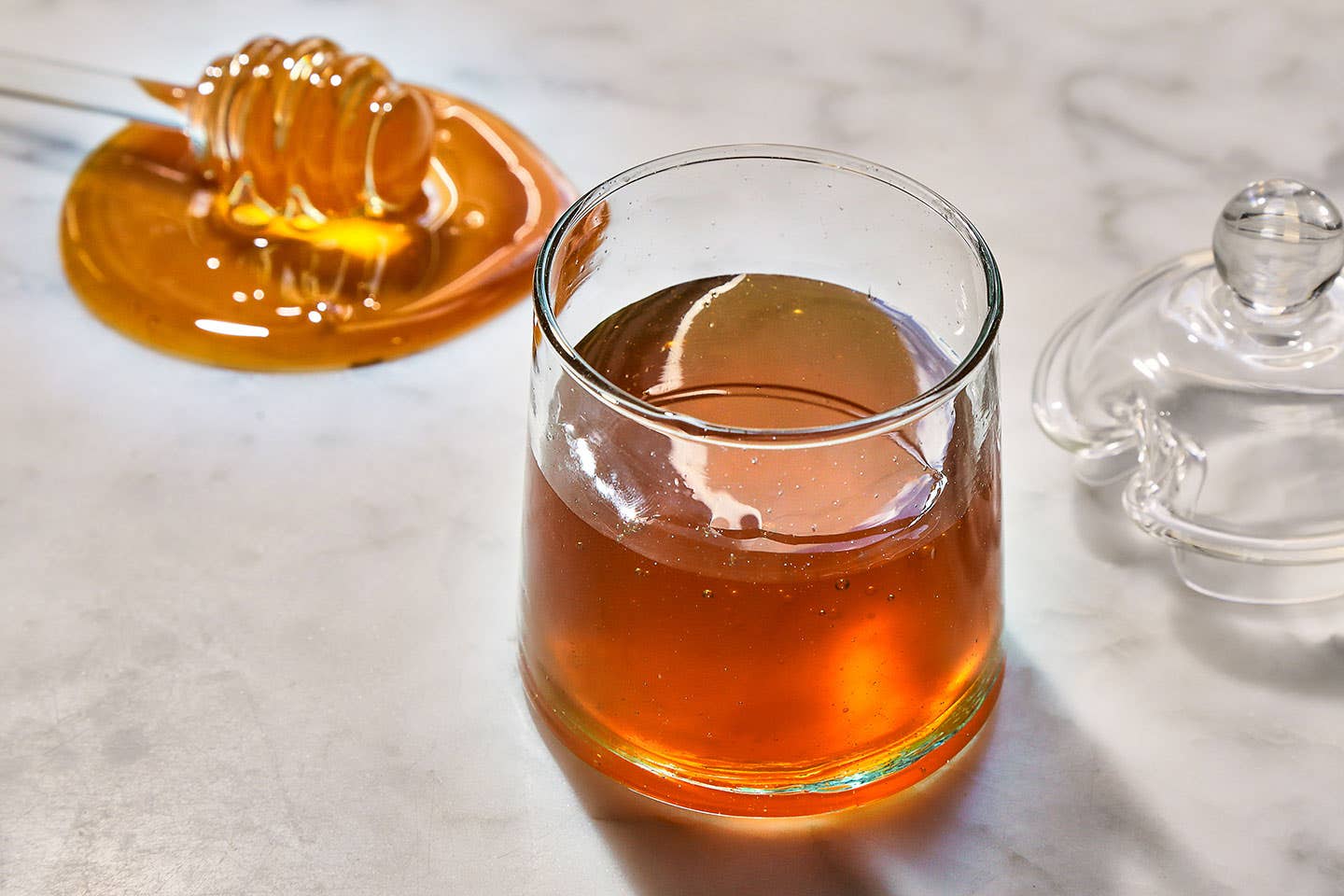
While often used as a sweetener on toast, in vinaigrettes, or drizzled over yogurt, the best honeys aren’t just sweet. “Honey should have flavor; it shouldn’t be just sweet,” says Marina Marchese, author, the founder of the American Honey Tasting Society, and a self-proclaimed honey sommelier formally trained by the Italian National Register of Experts in the Sensory Analysis of Honey. “Color, scent, flavors, and texture widely vary, and terroir plays a big part in that. Learning to really taste honey has a lot of similarities to learning wine.”
Marchese fell into her own buzzing beehive of research when she moved back to her native Connecticut from Manhattan and took up beekeeping as a hobby. “When I started to collect my own honey, I was blown away by how different it tasted from the honey I’d always had, and soon I started trading honey with other beekeepers, and there were distinctions between them. I started learning from there.”
Marchese teaches popular online classes and sends honey tasting education kits through the mail, focusing on teaching depth and complexity of taste as a marker of quality. But in order to sweeten your senses and lure you like … well … a bee to a flower into this wide world of tasting honey, we’ve chosen seven of the best honeys to try this spring. They hail from all over the country, from the Pacific Northwest to the swampy riverbanks of Florida, and remind us of just how sweet biodiversity can be on the plate, and for the planet.
Our Top American Honey Picks
- Best overall: The most local honey to your home location
- Best for experimentation and finding your flower preference: Jacobson Salt Five Vial Honey Collection
- Best finishing honey: Heaven’s Honey Local Chicago Honey
- Best for drizzling on fruit: Zach and Zoe Sweet Bee Farm Wildflower Honey with Ginger Root
- Best bourbon barrel honey: Apis Mercantile Bourbon-Barrel Aged Orange Blossom Honey
- Best for a sweet kick of spice: Mike’s Hot Honey
- Best name recognition: L.L. Lanier & Son's Tupelo Honey
Best Overall: The most local honey closest to your home location
Type: Various | Ounces: varies | Company: Your friendly local beekeeper | Good For: possibly allergies, definitely your local economy | Raw: preferred
Pros
- Supports your local food economy
- Naturally pairs with the foods that are native to your area
- Has local terroir
Cons
- Rarely on a big box store shelf
- Type, location, and ounces may vary
- Can be less convenient
Why we chose it: The best honey for you is the one that is harvested closest to you. It’s usually fresher, sold by someone who you can pepper with questions at a farmer’s market, and is a food that just might have the ability to make allergy season less uncomfortable.
The best honey is your most local honey. It not only has the pollen and flower flavor of your local area, those local molecules just might help you build up immunity for allergy season. “And the number one question I get is ‘How do I know a honey is good?” Marchese says. “My answer is to know your beekeeper. Buy it directly from the source, most likely at a farmer’s market, ask them about the flavors, and if they have a sample, taste it.”
Honey is a foodstuff, and when it comes to food, fresh is best, and fresh is easiest to obtain when you’re getting it from the source. Whether it’s a wildflower, clover, or orange blossom, getting to know your local honey will help you get to know what grows in your region, which is knowledge that can make you a better cook, too.
Best for experimentation and finding your flower preference: Jacobson Salt Five Vial Honey Collection
Best for experimentation and finding your flower preference
Type: Various | Ounces: 5 vials = 9.35 ounces | Company: Jacobson Salt | Good For: Cheese boards, roasted peaches, a simple spoon | Raw: Yes
Pros
- Variety
- Source / region clearly labeled
Cons
- May be too few ounces to cook with any single one
- Price per ounce
Why we chose it: Appropriate as either a host gift or for solo sampling, this sampler pack illustrates the wide world of flavor diversity in American single-source honeys.
They had us at carrot flower, one of the five flavors found in this collection. This beautifully packaged 5-vial pack of single-source honeys comes from Jacobson Salt, an Oregon-based company we already like for its finishing salts, and they provide the same high standards when it comes to sourcing honey. Each vial is distinct in flavor and color, the labels include the single source and its location, and it's a wonderful way to sample and select the flavor profiles your palate craves, including the aforementioned carrot flower, whose base note recalls one of our favorite spring veggies.
Best finishing honey: Heaven’s Honey Local Chicago Honey
Best finishing honey
Type: Clover | Ounces: 1 pound, 10 ounces | Company: Heaven’s Honey | Good For: Cheese boards, fried chicken, ice cream | Raw: Yes
Pros
- Great deal at $19.99
- Bright & floral
Cons
Why we chose it: Plenty of Chicago’s leading chefs champion this honey for its clean, bright flavor and focus on bee health.
Abdullah Motiwala founded Heaven’s Honey Inc. in 2015 as an effort to revive the dying bee population and fund local farmers, and he is known in the Chicago culinary community as a bee advocate, increasing awareness of bee-friendly ecosystems and even gifting bees to budding apiarists.
“It’s floral, rich, with a super clean and bright flavor, and I love it as a finishing honey,” says Chef Aaron Cuschieri of The Dearborn in Chicago. “I love even more the mission of the people who produce it, who are really focused on increasing bee populations and managing their bees really well.” While Heaven’s Honey will work in a variety of recipes, you can find it on the current brunch menu at The Dearborn served with Dutch apple pancakes. At home, we suggest following Cuscherieri’s advice and using it as a final drizzle before serving anything from pound cake to prosciutto and melon.
Best for drizzling on fruit: Zach and Zoe Sweet Bee Farm Wildflower Honey with Ginger Root
Best for drizzling on fruit
Type: Wildflower | Ounces: 16 ounces (1 pound) | Company: Zach & Zoe Sweet Bee Farm | Good For: Mango, strawberries, tea | Raw: Yes
Pros
- Distinct infused ginger flavor
- Black-owned family business
Cons
- Texture can be hit or miss
Why we chose it: In the world of flavored honeys, this ginger-laced honey from New Jersey stands apart for its fresh flavor and versatility with fruit.
This New Jersey company began because Summer and Kam Johnson started looking for raw honey to give to their son Zach for his allergies. Now it’s a growing business on the family’s land, there is a shop in Chelsea Market, and the list of stores that carry some of their wildflower honey extends all the way to Glasgow. This smooth, ginger root-infused honey is sublime on so many fruits, but most especially a perfectly ripe mango. It provides a gingery bite to your afternoon herbal tea, and in general provides an added depth to any baked good that incorporates it.
Best bourbon barrel honey: Apis Mercantile Bourbon-Barrel Aged Orange Blossom Honey
Best bourbon barrel honey
Type: Orange blossom | Ounces: 12 ounces | Company: Apis Mercantile | Good For: Buckwheat pancakes, roasted strawberries, sweet potatoes | Raw: Yes
Pros
Cons
- Actual farm source is not revealed on package
Why we chose it: We have already heaped praise on High Wire Distilling’s Jimmy Red Corn Bourbon, so sampling a honey aged in its barrels is a sweet pairing indeed.
Although there are plenty of bourbon barrel-aged honeys out there, not all of them are created equal. Apis Mercantile (begun by two college hobbyists turned entrepreneurs) partners with small-scale beekeepers to source high-quality honey, and their infusions have quickly become popular in the Lowcountry of South Carolina. The pairing of supremely floral orange blossom honey with Jimmy Red’s notes of vanilla, graham cracker, and cinnamon creates a depth beyond the usual “sweet-on-sweet” honey and bourbon pairing. Aging in a barrel also reduces some of the water content of the honey, so the mouthfeel is velvety and slightly heavier than others on this list.
Best for a sweet kick of spice: Mike’s Hot Honey
Best for a sweet kick of spice
Type: Unidentified | Ounces: 10 ounces | Company: Mike’s Hot Honey | Good For: Pizza, cocktails, brussels sprouts | Raw: No
Pros
- Easy to find
- Convenient squeeze bottle
- Certified Kosher
Cons
- Source is unknown
- Filtered
Why we chose it: A spicy squeeze of this Brooklyn-based honey adds a kick to any kitchen.
While apprenticing at Paulie Gee's pizzeria in Brooklyn, NY in 2010, Mike Kurtz brought in a bottle of his homemade pepper-infused honey (that includes chile peppers and vinegar) to try on pizza, and “The Hellboy”, with hot soppressata and a drizzle of Mike’s Hot Honey became an instant hit.
“I don’t know if it was Mike’s Honey, but I first had spicy honey on pizza at Pi Pizzeria in St. Louis,” says Amy Mills of 17th Street Barbecue in Murphysboro, IL. She came home, bought a squeeze bottle of Mike’s, and it’s been a home staple in her kitchen ever since. “I like its little zippy flavor, and it’s great on my homemade grilled pizza.” If a BBQ expert says she likes this level of spice, we’re inclined to agree, and yes, we know we’re only a two-step away (with the inclusion of vinegar and pepper) from a true hot sauce. Let’s keep dancing.
Best name recognition: L.L. Lanier & Son's Tupelo Honey
Type: Tupelo | Ounces: 6.4 ounces | Company: L.L. Lanier | Good For: warm biscuits, pear and goat cheese salad, panna cotta | Raw: yes
Pros
- We have no idea what Van Morrison has on his breakfast table, but we can’t say this honey isn’t there
- Multi-generational beekeepers since 1898
- A good value
Cons
Why we chose it: One of the most iconic honeys in the world produced by one of Florida’s oldest beekeeping dynasties elevates a simple smear on toast into an act of poetic beauty.
Tupelo honey is produced when honey bees collect nectar from the blossoms of the white Ogeechee tupelo (Nyssa ogeche) tree, trees that are distributed along the borders of rivers, swamps, and ponds primarily in the remote wetlands of Georgia and Florida. What results is a supremely delicate, floral honey with a greenish cast, and one with such a sublime flavor that it inspired Van Morrison’s 1971 folk classic, Tupelo Honey. The Lanier family has been intimately intertwined with this honey tradition since 1998, and their raw, unfiltered tupelo honey is the industry standard for this iconic single-origin honey.
How We Chose These Products
Honey is a daunting subject as it’s been prized since the earliest civilizations, so we focused on American honey, slurped a lot of samples on spoons, and then tapped some regional experts to help us narrow down some favorites in different areas of the country. We favor raw, unfiltered honey for its terroir, and if the honey is infused with other flavors, those flavors have to be true, not flavor extracts, and must complement the flavors of good quality honey without overshadowing them.
Features to Keep in Mind When Shopping for Honey
Type
Most honeys prized by cooks are single-origin, that is, collected from bees who primarily visit one blooming plant, such as a tupelo tree. Wildflower honey is the result of bees that flit to multiple plants to collect pollen, but it can still be a worthy addition to your pantry. Simply pay attention to the region of origin, and remember, the more specific, the better.
Flavor/Taste
By nature, a good raw, unfiltered honey (without any flavor infusions) will taste like the specific flower from which the bees gather nectar. Beyond that, locality and the care of the beekeeper when collecting the honey play a big role. The flavor can be rich and even a little acidic, or bright and clear, depending on the flowers the bees visit.
Other Ingredients
Other ingredients should complement, not cover-up, the honey itself. Look for real infusions, not flavor extracts or additives.
Color
Real, raw honey can have a wide range of colors, from light straw tones to deep brown (from something such as a pine forest), but most stay within the brown and yellow ranges, with few exceptions, most notably tupelo honey in the United States, which often has a greenish cast.
Texture
“The texture mostly has to do with the water content,” Marchese explains. “It comes down to the water content in the nectar molecules the bees collect, and that goes back to the location. Many tropical honeys will have a runnier consistency because of the presence of more water in the climate and the flowers, whereas honey from a dry mountain range might be a little thicker in texture.”
True Source Certification
“There are very few regulations for honey in the US,” she says, “ and for the most part, no one’s enforcing the few regulations we have. So essentially it’s the wild, wild West, and that’s why knowing your source is so important. At least 70 percent of honey sold in the US is imported, and much of the honey sold in bigger stores is blended from a few sources.”
In addition to that, there is scant regulation on additives, water content added, and even other sweeteners, so for real honey—not something else that simply passes for it—follow our lead and look local or from otherwise reputable sources.
Ask the Experts
Q: Does honey go bad/expire?
“Honey is pretty fragile, so it’s best to consume it soon after it is collected from the hive,” says Marchese. But of course, in a home such as hers that has an ever-rotating selection of honeys, that might not be doable; her rule of thumb for honey expiration is around two years. “I will start to see changes in color with honey that’s over two years old; the flavors become muted and faded, and in general it’s not at its best.”
Q: What's the difference between filtered and unfiltered honey?
Filtered honey is usually briefly heated and then filtered to remove particles. This usually means that tiny particles of pollen as well as beneficial bacteria can be removed during this process, both of which contribute to beneficial properties and sometimes even flavor. Raw and unfiltered honey is best.
Q: Can local honey cure my allergies?
We are not medical experts here at Saveur, nor do we attest to be, but many people swear by the allergy-reducing effect over time when consuming local honey. Consult your medical practitioners for more specific advice, but for us, we’re going for the “it can’t hurt” effect, especially if it elevates our morning bowl of steel-cut oats.
Q: Is honey safe for my child?
According to the CDC. “Honey before 12 months [of age] may cause a serious type of food poisoning called botulism. Before your child is 12 months old, do not give him or her any foods containing honey, including yogurt with honey and cereals and crackers with honey, such as honey graham crackers.”
Q: My honey has turned into hard crystals, should I throw it away?
It depends. Marchese stresses that honey crystallization can be a sign of good quality, and that honey can crystalize after two weeks, two months, or when exposed to fluctuating temperatures. However, she asserts, if you spy liquid honey on the top over a layer of crystals, and some deep crystals at the bottom of the jar, that might indicate crystallization breaking down after a long time. Avoid that jar on the store shelf, and judge accordingly if it’s just been pulled from your pantry.
Our Take
Honey is much more than sweet. It holds within it the terroir, or flavor essence of a locale, and can vary in color, texture, and flavor. If you’re looking for its beneficial health properties, local is best, and as in every foodstuff, sourcing and farming practices bear out in the flavor of the final product.
Keep Reading
Continue to Next Story
